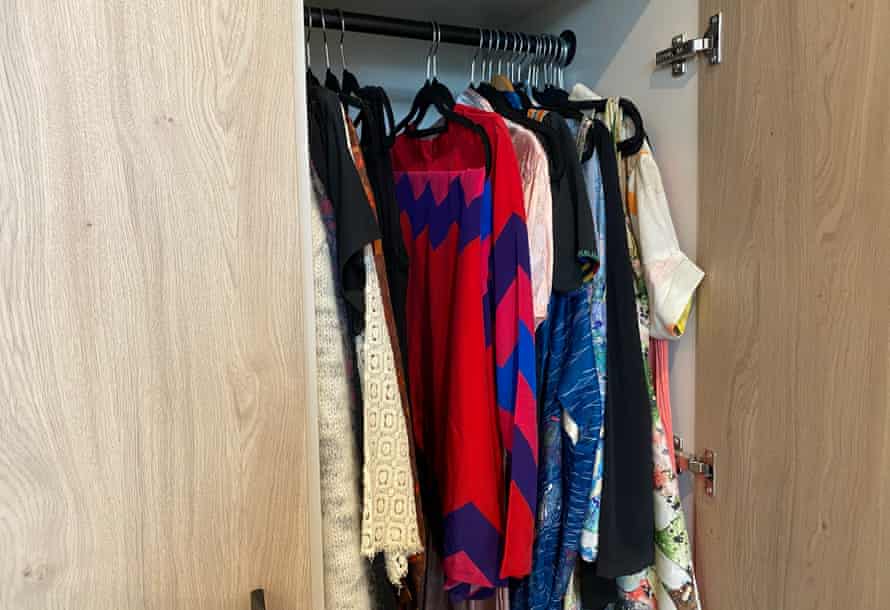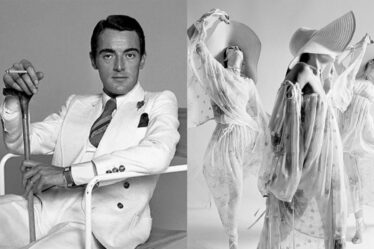
The fantasy of opening your wardrobe to find neat rows of colour coded shirts, jackets and pants is pretty universal. In fact, in two separate, strange fashion jobs I’ve been paid by a superior to organise theirs.
The process usually starts with a clean out, as any kind of organisation is aided by space. What follows can be more complicated.
This week we got some expert advice on what should be hung versus what should be folded, the best order to store things in.
Visibility is key
A well organised wardrobe should make getting dressed easier. According to Kirsty Farrugia, a professional organiser and owner of the Art of Decluttering, it helps to be able to see each individual item when you’re deciding what to wear.
She advises: “If you end up not being able to see everything, it can cause the issue of forgetting you even had some pieces because you can’t see them.”
Elinor McInnes, the creative director of slow fashion brand Joslin, recommends having shelves inside your wardrobe so you can see what you have folded beside what is hanging and mentally put together an outfit without having to pull anything out. To help with visibility, she organises everything by category, then by colour and tone.
Arrange for how you dress
Make sure any items you have on high rotation (meaning you wear them at least once a week) are easily accessible. Mary Poulakis, the managing director of Harrolds, says to focus on “easy access to frequently worn pieces like favourite T-shirts, blouses, shirts and throw-over jackets”.
Similarly, McInnes has a section for her favourite “mix and match outfits” that get worn often. She says to make sure the section is in the “most accessible part of your wardrobe” and advises, “if you regularly wear an outfit together, always store it together”.
Finally, Poulakis recommends storing “garments in the order that you would get ready in the morning”. So, you can reach your underwear and intimates first, then your T-shirts or shirts, your trousers or skirts, then jackets or jumpers, followed by coats and accessories.
Of course, getting dressed is personal, so if you build an outfit from the shoes up, the way you arrange your wardrobe might be different from someone who dresses from their top down.
Have a wear-again zone
Another thing that can make getting dressed easier, is getting a few hooks installed inside your wardrobe so you have somewhere to hang clothes that have been worn but don’t need to be washed straight away. McInnes says, “this keeps mess off the floor and reduces how much washing you do weekly” and can assist with outfit decisions.
She also recommends storing pyjamas and clothes you wear around the house in a tub on a shelf in your wardrobe. This means “they are easily accessible every night and easy to put away” without folding.
What to hang
The most important thing to consider when deciding what to hang or what to fold is whether or not it will lose its shape if it’s hung. Since knitwear can be heavy and prone to stretching, John Roberts, The Woolmark Company managing director, says a general rule of thumb is “hang wovens, fold knits”.

According to Roberts, woven garments like tailored business shirts, jackets and suits should be hung so “they remain crease-free”. Poulakis says, “hanging trousers and special evening attire is a must to minimise the expenditure of ironing and dry-cleaning time.”
Finally, be wary of hanging long dresses if they are particularly heavy, as the weight of the dress can damage the shape of the shoulders. Instead McInnes suggests using two thin hangers and folding the bottom of the dress over the second hanger to carry the weight of the lower part of the garment.
What to fold
“All knitwear should be folded flat or rolled in a drawer with a good moth ball protection guard” says Poulakis. McInnes warns that hanging knits can “permanently ruin the garment” by stretching it over time.
Poulakis also says to prioritise folding bulkier items over delicate pieces. “For example, your favourite denim can be easily folded without compromising the item’s structure or damaging its fabrication.” The same goes for leather pants and skirts.
Organising folded drawers
In the interest of having visibility into the items in your drawers, both McInnes and Farrugia recommend the Japanese author Marie Kondo’s method of folding. McInnes says, “You fold things ‘standing’ in your drawers/storage … and it creates double the space.”
Farrugia describes it as folding in “file fashion”. The principle is that each item is folded in a way that allows it to be stored vertically, rather than in piles, so when you open each drawer it’s apparent what’s there. There is a more detailed guide available here.



